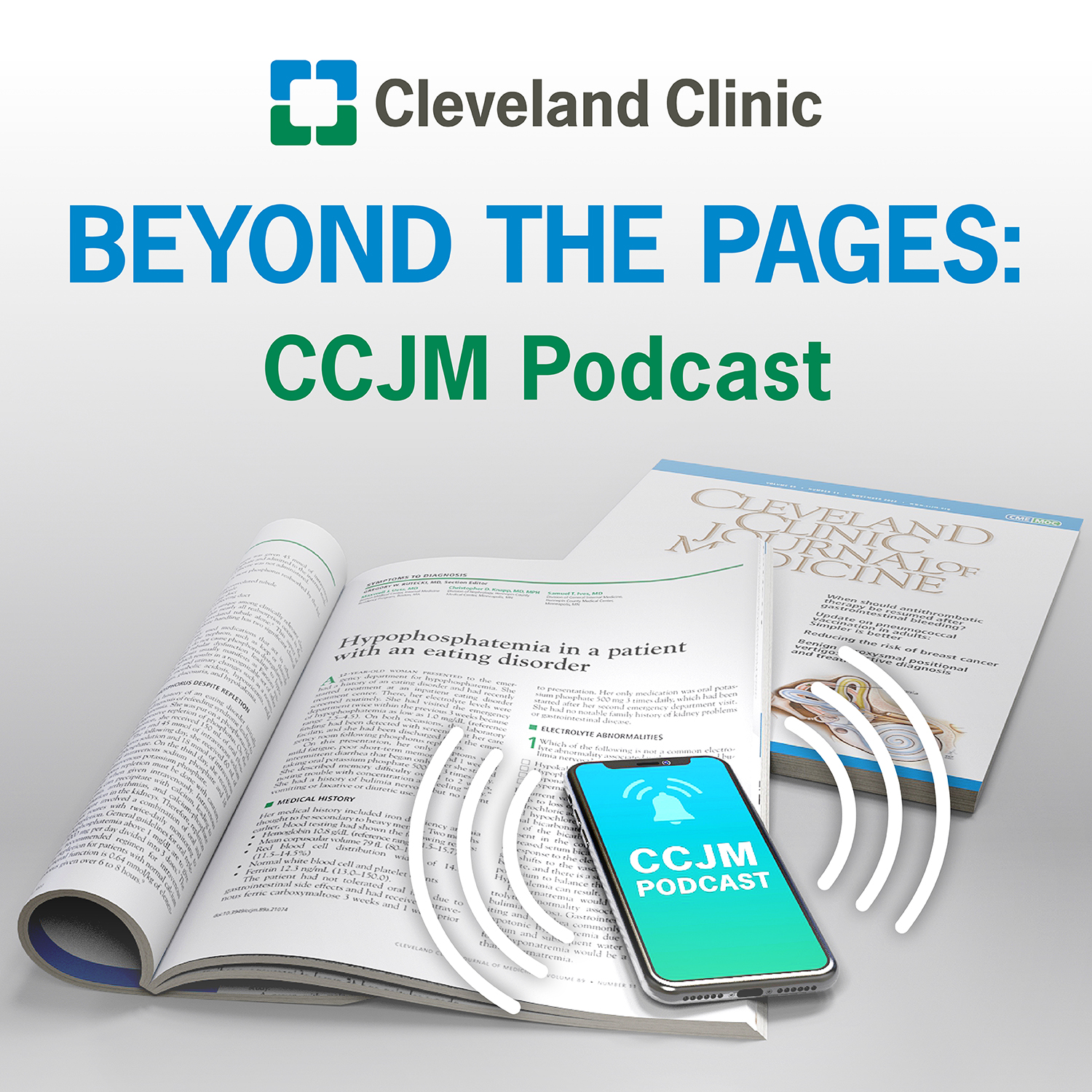High-value Approach to Blood Products: RBC, Plasma, and Platelets

Dr. Moises Auron discusses about his high value approach to transfusion of blood products: PRBC, FFP, and Platelets.
Subscribe: Apple Podcasts | Podcast Addict | Buzzsprout | Spotify
High-value Approach to Blood Products: RBC, Plasma, and Platelets
Podcast Transcript
Question 1: (Dr. Wardrop): I can ask the first question to Dr. Auron. So, for the internal medicine residents, medical students, and PCPs, how should we treat pre-operative anemia and what is what is my cut-off hemoglobin value to transfuse?
Answer: (Dr. Auron)
Preoperative anemia is associated with increased postoperative morbidity and mortality. Don’t proceed with elective surgery in patients with properly diagnosed and correctable anemia until the anemia has been appropriately treated. Anemia is common, presenting in approximately one-third of patients undergoing elective surgery. There is often the misconception that anemia is harmless, when, in fact, it is independently associated with significant morbidity and mortality that can be as high as 30-40% in certain patient populations. Treatment of anemia improves patient readiness for surgery, aids in management of comorbid conditions, decreases length of stay and readmission rates, and reduces transfusion risks. Treatment modalities may include nutritional supplementations, such as iron, B12 and folate, changes in medication, management of chronic inflammatory conditions or previously undiagnosed malignancy, or other interventions based on the etiology.
Restrictive RBC transfusion threshold should be followed:
Hb 7 g/dL: hemodynamically stable hospitalized adult patients, including critically ill patients.
Hb 7.5 g/dL: for patients undergoing cardiac surgery and
Hb 8 g/dL: for those undergoing orthopedic surgery or those with preexisting cardiovascular
disease
Do not apply acute coronary syndrome, severe thrombocytopenia, chronic transfusion-dependent anemia. No restriction of RBC use based on storage life.
Case 1 (Arjun)
Thank you for sharing that Dr Auron. I wanted to start by presenting a case that I recently encountered during my IM wards, a 50 y/o male patient is scheduled to undergo total colectomy for Ulcerative colitis in Nov 2023. The patient’s hemoglobin is 9 g/dL. The anesthesiologist orders a transfusion of a unit of pRBC and the rationale is “the patient needs blood for optimal oxygen delivery”. After listening to your talk, we disagreed based on:
The Hb threshold for transfusion is < 7 g/dL; The preload can be optimized instead; The oxygenation can be optimized instead
Question 2 (Arjun): What are the risks of blood transfusion?
Answer: (Dr. Auron)
Bloodborne infections such as HIV, HCV, and HBV occur at a rate of approximately 1 in 1 million. Fatal hemolysis is also reported at a frequency of 1 in 1 million. Transfusion-related acute lung injury (TRALI) has an incidence of around 1 in 10,000, while Transfusion-Associated Circulatory Overload (TACO) and fever are relatively common, affecting approximately 1 in 100 cases.
Question 3 (Arjun): Could you guide us through the process of assessing and managing anemia in the perioperative setting? When should we be consulting GI for EGD/colonoscopy for the evaluation of iron deficiency anemia?
Answer: (Dr. Auron)
Dr. Auron describes the assessment and management of anemia. Please refer to Figure 1. Prevention, detection, evaluation, and management of anemia in the perioperative setting. doi: 10.1213/ANE.0000000000004727.
Think about consulting GI in the following situations, first diagnose iron deficiency with a low ferritin <=45 ng/mL.
- Asymptomatic postmenopausal ♀ and ♂ with IDA: bidirectional endoscopy over no endoscopy.
- IDA w/o identifiable etiology after bidirectional endoscopy: Consider a trial of iron replacement, over capsule endoscopy.
Question 4 (Dr. Wardrop): Do you use oral iron or IV iron? Is it safe to use IV iron preparations?
Answer: (Dr. Auron)
PO iron is better absorbed with alternate day dosing vs everyday dosing, but can have side effects like constipation. IV iron is safe and is available in several formulations. Some of the side effects include –
Fishbane reaction: Transient flushing. truncal myalgias
Mild: Localized cutaneous manifestations
Moderate: nausea or abdominal cramping, dyspnea, ↓BP ↑HR
Severe: bronchospasm, laryngeal edema or shock (anaphylaxis)
The predicted risk of anaphylaxis is highest with Iron Dextran (80/100,000) with iron sucrose being the lowest (at 20/100,000)
Case 2 (Arjun)
Thank you for providing that information on PRBC transfusion, Dr. Auron. I'd like to shift the focus by presenting another case from our liver service that I encountered a few months ago. A 50-year-old male with Hepatitis C cirrhosis, MELD score of 20, and INR of 1.9 was admitted with a fever. Upon examination, significant ascites were observed. Blood cultures were collected, broad-spectrum antibiotics were initiated, and the plan was to investigate spontaneous bacterial peritonitis (SBP) through paracentesis. How many units of fresh frozen plasma (FFP) would you recommend administering before he undergoes paracentesis?
Dr. Auron explains how the coagulation/fibrinolytic cascade and liver cirrhosis affecting both pathways, and INR isn’t reliable.
The volume of FFP required to provide meaningful replacement of coagulation factors can be associated with circulatory overload and pulmonary edema and cause TACO. Need to individualize treatment and preferably consider other choices: vitamin K & 4PCC. FFP shouldn’t be used in this case.
Question 5 (Arjun): What about warfarin-associated bleeding, we can use FFP to reverse warfarin, correct?
Answer: (Dr. Auron)
No Arjun, most warfarin-associated bleeding can be reversed with vitamin K alone. [IV Vitamin K 5 to 10 mg]. The factors are already synthesized and just need a final conversion step which is blocked by warfarin which inhibits the Vit K oxide reductase. So, when you give Vit K, you reverse the process.
Four-factor PCC can be transfused rather than with plasma, as PCC corrects INR much faster than FFP. FFP should be reserved for serious bleeding or emergency surgery.
Question 6 (Dr. Wardrop): What should be our pre-op INR/platelet targets for elective surgeries?
Answer: (Dr. Auron):
For low-risk procedures in non-liver disease patients, no need to check PT/INR or CBC. If checked, INR < 2-3 and PLT > 20 should be good enough. Examples include:
Catheter change (e.g. nephrostomy); Arterial interventions; Venous interventions; Dialysis access interventions; Spine injections/blocks; IVC filter; Lumbar puncture; Chest tube; Venous catheter placement; Paracentesis/thoracentesis; Abscess drain; Trans-jugular liver biopsy
For high-risk procedures in non-liver disease patients, target INR < 1.5 -1.8 AND PLT > 50, examples include:
Ablations (e.g. solid organ, lung); Arterial with >7F; Biliary interventions; Catheter-directed thrombolysis; Deep abscess drain (e.g. lung, retroperitoneal); Deep biopsies (e.g. retroperitoneal); Gastrostomy placement; Portal vein intervention; Solid organ biopsy; Spine with risk of spinal/epidural bleed; TIPS; Nephrostomy; Venous interventions (intrathoracic, CNS)
For liver disease patients, target PLT >20 and fibrinogen >100 for low-risk procedures and target INR <2.5, PLT >20 and fibrinogen >100 for high risk procedures.
Case 3 (Arjun)
Thank you for providing that information on FFP, Dr. Auron. I'd like to shift the focus by presenting another case from my ICU rotation. A 35-year male with prolonged hospitalization after trauma requiring ICU admission and IHD. He develops a new febrile episode and has mental status changes with meningismus. His platelet count is 25x10^3/mm3. An IR-guided lumbar puncture is requested. At what level shall his platelet number be risen?
Question 7 (Arjun): What are the challenges and risks associated with platelet transfusion?
Answer: (Dr. Auron)
There are several challenges with platelet transfusion: Expensive and short half-life; Stored at room temperature (↑ bacteria); Not readily available; Causes majority of transfusion reactions; Risk of alloimmunization
The are also several risks of platelet transfusion: Febrile reaction & allergic response is very common 1/14 & 1/50; bacterial sepsis is 1/75, 000; TRALI is 1/138,000 but overall risk for TRALI from all plasma-containing blood products ~ 1/10,000
Question 8 (Arjun): What are the guidelines for platelet transfusion?
Answer: (Dr. Auron)
Transfuse single apheresis unit or equivalent.
-Platelet < 10 × 10^9/L to ↓ spontaneous bleeding.
-Platelet < 20 × 10^9/L for central venous catheter
-Platelet < 50 x 10^9/L for lumbar puncture (< 40 – BSH)
-Platelet < 50 x 10^9/L for major elective surgery
-Platelet < 100 x 10^9/L for Neurosurgery & ophthalmology
So, in the case that Arjun shared, the patient doesn’t need any more platelets before undergoing lumbar puncture, as his platelet count Is already 20 × 10^9/L and the patient doesn’t need any more platelets.
Question 9 (Arjun): What are the contraindications to Platelet transfusion?
Answer: (Dr. Auron)
Absolute contraindications are Heparin-induced thrombocytopenia and immune thrombocytopenic purpura. Relative contraindications are Disseminated intravascular coagulation and thrombotic thrombocytopenic purpura.
Question 10 (Arjun): What are a few of the alternatives to Platelet transfusion?
Answer: (Dr. Auron) Treat ITP, DD-AVP, and TPO can be considered for high-risk bleeding patients. Consider transfusion with inadequate response.
Question 11 (Arjun): Can you briefly touch upon Thromboelastography (TEG) /ROTEM?
Answer: (Dr. Auron)
TEG shows the interaction of platelets with the coagulation cascade (aggregation, clot strengthening, fibrin cross-linking and fibrinolysis)
Increased R time => FFP
Decreased alpha angle => cryoprecipitate
Decreased MA => platelets (consider DDAVP)
Wrap-up: (Dr. Wardrop) What are your final take-home points for all the generalists and PCPs for High-Value Approach to Blood Products: RBC, Plasma, Platelets?
Dr. Auron shared his take-home points about the high-value approach to blood products: RBC, Plasma, and Platelets.

The Medicine Grand Rounders
A Cleveland Clinic podcast for medical professionals exploring important and high impact clinical questions related to the practice of general medicine. You'll hear from world class clinical experts in a variety of specialties of Internal Medicine. Hosted by Richard Wardrop, MD, PhD and Arjun Chatterjee, MD.

